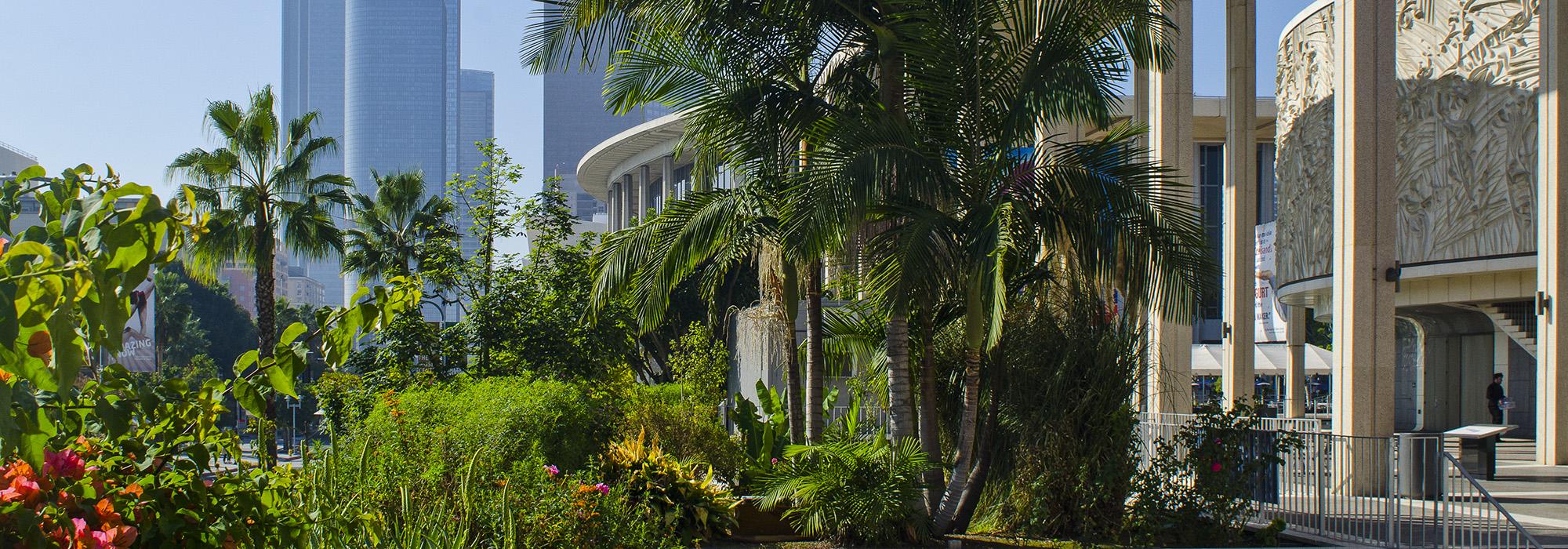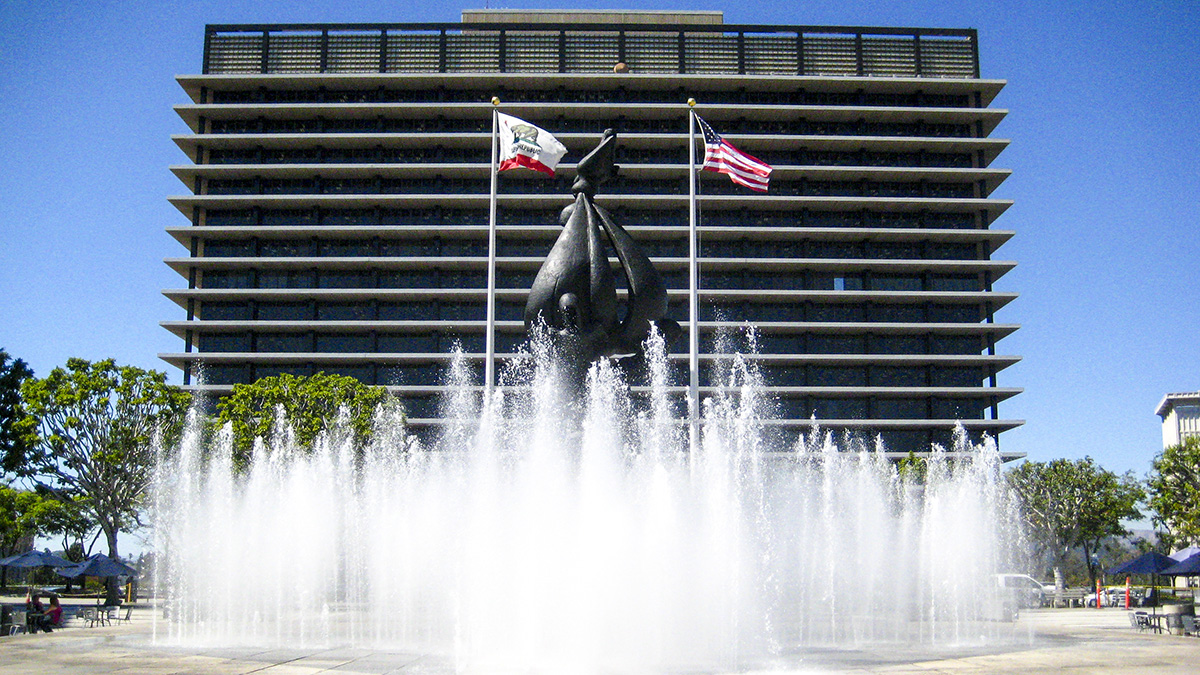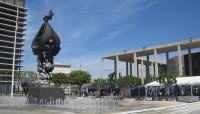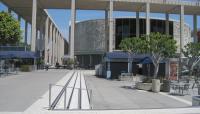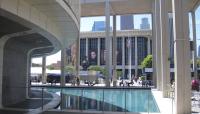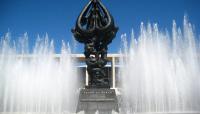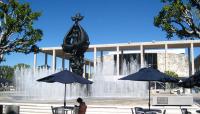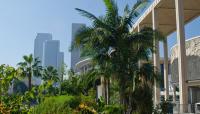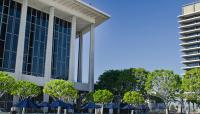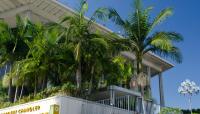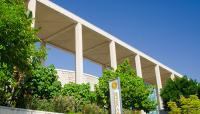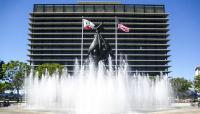Landscape Information
Located at the western end of the Civic Center, this performing arts campus is one of the country’s largest, encompassing eleven acres and four separate venues. In 1955 Dorothy Chandler, wife of the Los Angeles Times publisher, began fundraising for a permanent home for the city’s Philharmonic; Los Angeles County later provided a site at the top of Bunker Hill with unparalleled views of the mountains to the north from downtown. Designed by Welton Becket and constructed between 1962 and 1967, the Modernist center features three structures flanking an east-west oriented, landscaped plaza: the Dorothy Chandler Pavilion (1964), the Mark Taper Forum (1967), and the Ahmanson Theatre (1967).
The largest of the three original structures, the Pavilion, faces the drum-like, circular Forum bordered on one side by a paved plaza and the other by a reflecting pool in front of the Ahmanson Theatre. The buildings are connected by a stepped plaza designed by landscape architects Cornell, Bridgers and Troller in collaboration with Becket. The plaza originally contained a shallow reflecting pool at its center, into which Peace on Earth, a monumental sculpture by Jacques Lipschitz was added in 1969; the pool has been drained and now is comprised of kinetic fountains. The eastern stairs are dominated by Dance Door, a bronze sculptural piece created in 1978 by Robert Graham and donated to the Music Center in 1982. The sunken forecourts fronting the buildings contain planters with small ficus arranged in two neat rows, while the periphery is lined with mature deciduous trees and planting beds filled with palms.



